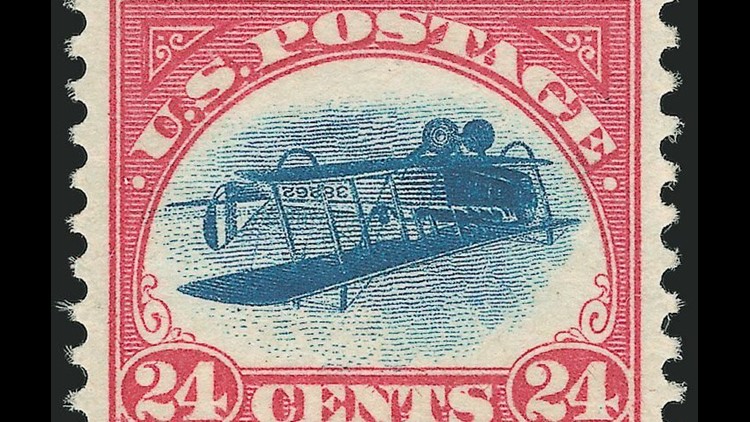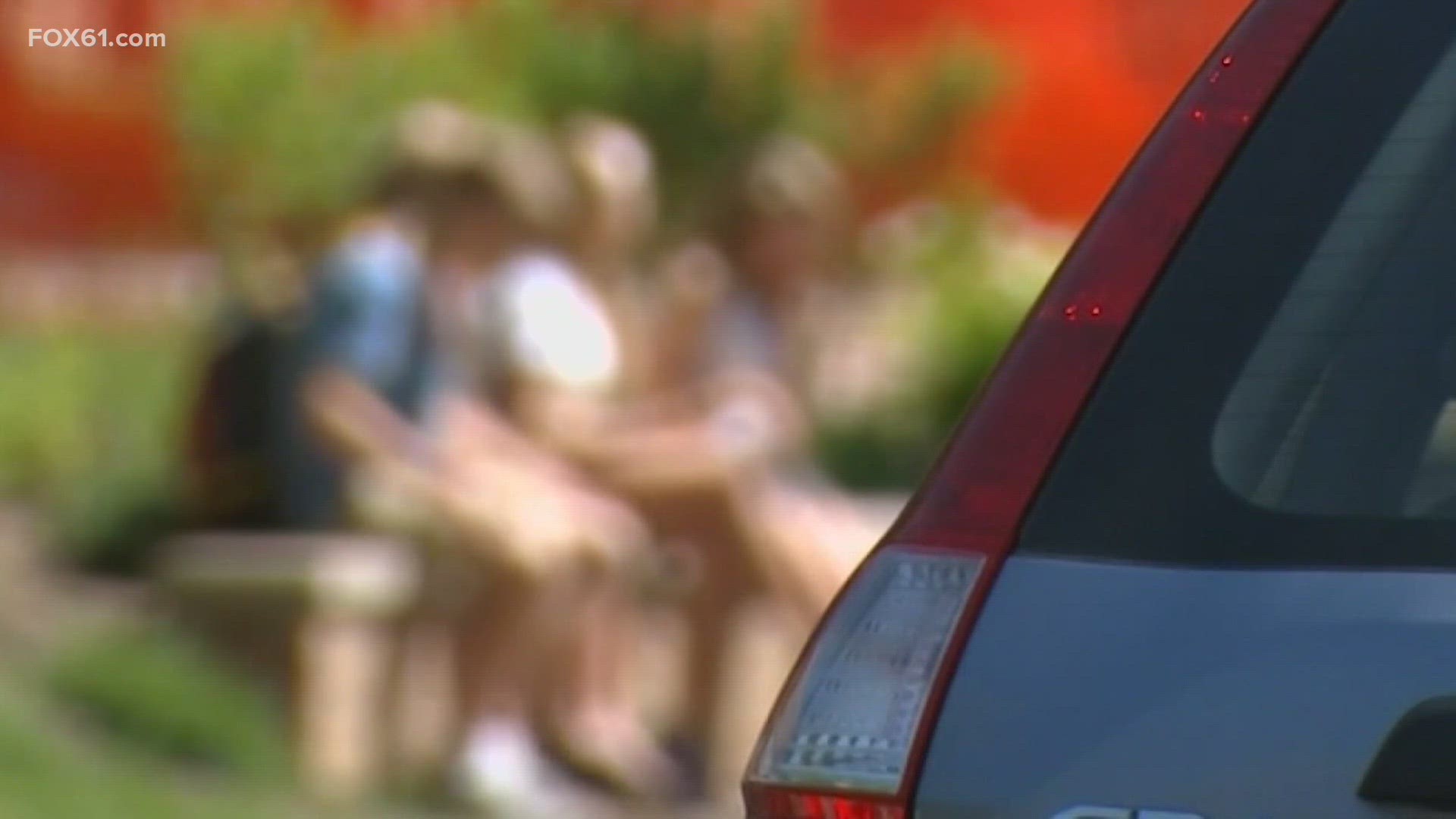There are only 100 “Inverted Jenny” stamps in existence. So when one goes on sale, it’s a big deal.
The stamps are known for the printing error that created them. On the stamps is an image of the first plane used for airmail: The Curtiss Jenny. It’s an image that’s on thousands of stamps printed at the time. But on the Inverted Jennys, the image was accidentally — you guessed it — printed upside down.
“The Inverted Jenny is the world’s most famous stamp,” says Scott Trepel, owner of Siegel Auction Galleries. “It has its own legend.”
Trepel, who has been a stamp collector since he was 9 years old, will auction off one of the Jennys from a private collector on May 31 at the World Stamp Show in New York.
The Inverted Jenny for sale is number 58 of 100 stamps. It’s the finest copy of the stamp known to be in existence, with a grade of 95 out of 100 by PSE, the leading grading service of stamps. This stamp was last sold in 2005 for $600,000 and is expected to get much more this time around.
“It has a catalog value of $1.6 million dollars,” Trepel says. “I think everyone would be very happy if it went for that much.”
‘Tricky business’
In 1918 when the stamps were printed, a stamp collector by the name of William Robey had a hunch there would be errors, specifically inverts of the stamp.
“Printing a stamp in two colors back then was tricky business,” Trepel says. “The last time the Bureau of Printing and Engraving, which prints stamps, (had) tried it was in 1901, and they messed up.”
So Robey began looking for errors of the new two-color airmail stamp. Soon after they were printed he walked into a post office and asked for a sheet of them. To his surprise, he saw that the plane was printed upside down.
“Only a few stamps are errors that were bought at the post office,” Trepel explains. “It’s like winning a scratch-off ticket.”
Robey asked to see more of the sheets but the rest were printed correctly. It was unclear at the time if more sheets of Inverted Jennys existed.
“People thought that there were three more sheets existing in post offices. Robey was worried that more would turn up and the value of his sheet would decline. That is why he was in such a rush to sell it,” Trepel says. “In fact, no other sheets reached the public.”
Robey bought his sheet of 100 stamps for $24.00 and quickly contacted a Philadelphia stamp dealer. He sold the sheet a week later for $15,000. The dealer promptly sold the 100 Inverted Jennys to another individual collector by the name of Col. Edward H. Green for $20,000.
Green was advised that the stamps would be more valuable on their own. So they were split up and sold off. Luckily, “he penciled the position number on the sheet on the back of every stamp,” Trepel says, so collectors are able to keep track of the stamps. “I think we know where 98 out of 100 are; a couple have not been seen.”
Mistakes, mysteries and myths
Trepel is full of stories about the stamps’ varied history.
“One of them was in an album and fell out and was vacuumed up. They found it in the bag,” he says. “It was damaged but they prepared it and sold it off.”
Another was put into a locket by Green for his wife. One side was an Inverted Jenny stamp and the other was a regular Jenny stamp.
Green’s wife also allegedly mailed one of the stamps, making it the only Inverted Jenny to actually be used for postage.
The most famous theft? “The one stolen from the New York Public Library,” Trepel says.
Another four-stamp block, known as the McCoy block because it was owned by a woman named Ethel McCoy, was stolen in 1950.
“Slowly but surely the four stamps in that block, which were divided, have surfaced, and just recently, one came to light.”
In 2004, the world was excited by an apparent Inverted Jenny appearing on a mail-in voting ballot.
“It made all the news headlines because people thought it was real, but anyone who knew anything knew it was a forgery,” Trepel says.
Trepel has previously sold an 85-grade Inverted Jenny for $935,000, the current record price for a single Inverted Jenny. He never likes to guess how much a stamp will sell for at one of his auctions, but for him, the stamp strikes an emotional chord.
“Holding this stamp, I think of the people — from the pilot who flew the first airmail flight, to William Robey who bought it at the post office and pocketed a $15,000 profit. I think of Col. Green who is a fascinating figure and, of course, the collectors that (have) owned it ever since.”



